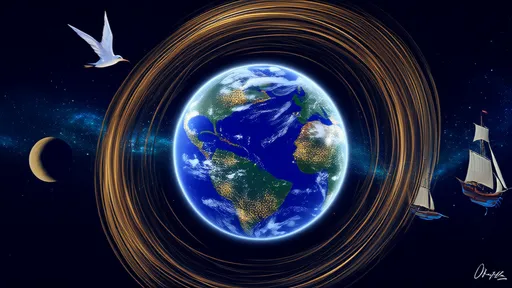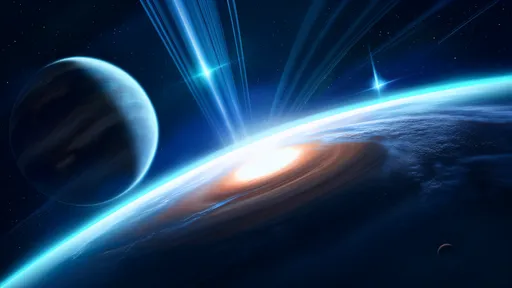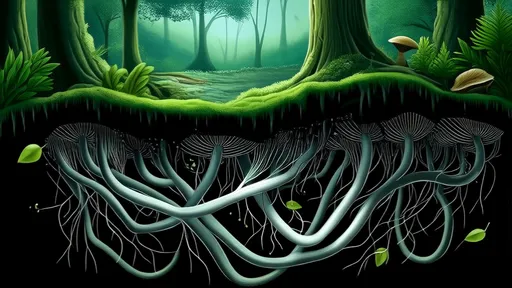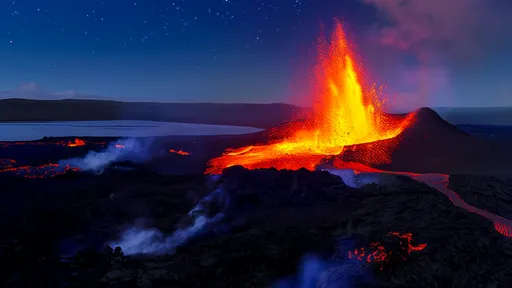The universe is a theater of extremes, where the familiar weather patterns of Earth give way to phenomena that defy imagination. Among the most astonishing are the diamond rains of Neptune and Uranus, and the vast hydrogen oceans of Jupiter. These celestial wonders not only challenge our understanding of planetary science but also paint a vivid picture of the diversity within our solar system.
The Diamond Deluge: A Gemstone Storm
Deep within the atmospheres of Neptune and Uranus, scientists believe that diamonds rain from the sky. These ice giants, composed largely of hydrogen, helium, and methane, host conditions so extreme that carbon atoms are compressed into crystalline structures. High-pressure experiments on Earth have replicated these environments, confirming that methane—a molecule containing one carbon atom—can break apart under immense pressure, freeing carbon to form diamond particles. These diamonds, heavier than the surrounding material, then sink toward the planetary cores in a glittering downpour.
The process begins in the upper atmospheres, where methane is exposed to intense lightning storms. The energy from these storms breaks the methane molecules apart, releasing carbon. As this carbon drifts downward, the increasing pressure forces it to crystallize. By the time it reaches the lower layers, the carbon has transformed into solid diamond. Some researchers speculate that these diamonds might eventually accumulate into layers of diamond "hail" or even vast diamond "seas" near the cores of these planets.
The Hydrogen Ocean: Jupiter’s Endless Sea
Jupiter, the solar system’s largest planet, is a world of unimaginable scale and violence. Beneath its turbulent cloud tops lies an ocean unlike any on Earth—a vast, churning sea of liquid metallic hydrogen. This exotic state of hydrogen occurs only under pressures millions of times greater than Earth’s atmosphere, compressing the gas into a fluid that conducts electricity like a metal.
This metallic hydrogen ocean is thought to be the source of Jupiter’s powerful magnetic field, which dwarfs Earth’s in both strength and size. The planet’s rapid rotation—a day on Jupiter lasts just under 10 hours—whips this conductive fluid into a frenzy, generating electric currents that produce the magnetic field. The dynamics of this ocean are still poorly understood, but its existence hints at the bizarre and extreme states of matter that can arise under such conditions.
Extreme Winds and Eternal Storms
While diamond rains and metallic oceans dominate the interiors of these planets, their surfaces and upper atmospheres are no less extreme. Neptune boasts the fastest winds in the solar system, with gusts reaching up to 1,500 miles per hour. These supersonic winds are fueled by the planet’s internal heat, which drives massive storm systems across its blue-hued atmosphere.
Jupiter’s Great Red Spot, a storm larger than Earth, has raged for at least 400 years. This anticyclonic tempest, with winds exceeding 400 miles per hour, is a testament to the planet’s turbulent weather systems. Unlike storms on Earth, which are powered by the sun’s heat, Jupiter’s storms draw energy from the planet’s own internal heat, left over from its formation.
The Frozen Fury of the Outer Solar System
Beyond the gas giants, the outer solar system hosts its own brand of extreme weather. Saturn’s moon Titan, for example, has a methane cycle akin to Earth’s water cycle, with methane rain feeding rivers and lakes. Meanwhile, Pluto’s thin atmosphere freezes and collapses as the dwarf planet moves away from the sun, creating a bizarre seasonal cycle of atmospheric expansion and contraction.
Even the sun itself contributes to the solar system’s weather extremes. Solar winds and flares can strip away atmospheres, as may have happened to Mars, or ignite spectacular auroras in the polar regions of planets with magnetic fields. The interplay between a planet’s atmosphere, magnetic field, and distance from the sun creates a staggering variety of weather phenomena.
Unlocking the Mysteries of Alien Climates
Studying these extreme weather systems not only satisfies human curiosity but also deepens our understanding of planetary formation and evolution. The diamond rains of Neptune and Uranus, for instance, offer clues about the distribution of carbon in the solar system. Jupiter’s metallic hydrogen ocean provides insights into the behavior of matter under extreme pressures, with implications for both astrophysics and materials science.
As technology advances, missions like NASA’s Juno probe and future explorations of the ice giants promise to reveal even more about these alien climates. Each discovery peels back another layer of mystery, showing us just how strange and wondrous our cosmic neighborhood truly is.

By /Jun 7, 2025

By /Jun 7, 2025

By /Jun 7, 2025

By /Jun 7, 2025

By /Jun 7, 2025

By /Jun 7, 2025

By /Jun 7, 2025

By /Jun 7, 2025

By /Jun 7, 2025

By /Jun 7, 2025

By /Jun 7, 2025

By /Jun 7, 2025

By /Jun 7, 2025

By /Jun 7, 2025

By /Jun 7, 2025

By /Jun 7, 2025

By /Jun 7, 2025

By /Jun 7, 2025

By /Jun 7, 2025

By /Jun 7, 2025